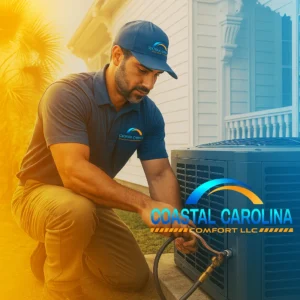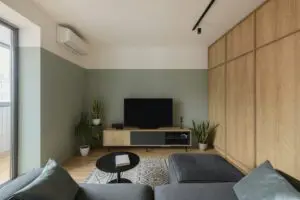Charleston is full of charm, from its cobblestone streets to its timeless architecture. Many of the homes here date back decades, some even centuries, and they weren’t exactly built with central heating or cooling in mind. While their craftsmanship has stood the test of time, their design often makes modern comfort systems harder to install or less efficient. For homeowners, that can mean uneven temperatures, high energy bills, and constant upkeep, especially during the long, humid summers.
As the seasons shift and demand on your HVAC increases, these older homes may benefit from a more thoughtful approach. Working with the layout and limitations of these properties requires an understanding of both old construction methods and today’s HVAC options. From adapting ductwork to boosting efficiency without damaging any part of the house, it’s all about finding the right fit for an aging structure.
Understanding The HVAC Needs Of Older Homes
Homes built before the widespread use of HVAC systems tend to have their own quirks. Thick plaster walls, narrow crawlspaces, and limited room for ductwork mean not every upgrade can follow a one-size-fits-all approach. Many Charleston homes also have original windows that let out cool air, aging insulation, and outdated floor plans that weren’t designed to help air flow easily. Together, these factors can make it harder for your HVAC system to evenly heat or cool the space.
Some of the most common HVAC challenges in older Charleston homes include:
1. Outdated or damaged ductwork that leaks air or creates blockages
2. Poor insulation leading to heat loss in winter and excess heat in summer
3. Limited space for modern HVAC components such as air handlers and return vents
4. Irregular room layouts that cause cold or hot spots throughout the home
5. Hard-to-reach attics and crawlspaces that make installation and maintenance tough
Since older houses often hide years of patchwork fixes, it’s important to start with a complete inspection from a licensed HVAC professional. A technician with experience in historic homes can spot issues like hidden duct gaps, clogged returns, or inefficient configurations. From there, they can offer tailored solutions that fit the home’s design and comfort goals.
Making changes without a plan might do more harm than good, especially when it comes to balancing airflow or protecting original features. That’s why having a team that understands the balance between preservation and performance makes all the difference.
Upgrading HVAC Systems in Historic Charleston Homes
Bringing modern HVAC technology into older Charleston homes can feel like fitting a new key into an ancient lock, but with the right approach, it can make a world of difference. Updates allow homeowners to enjoy better comfort and energy savings without compromising the charm that makes these homes special. Modern HVAC systems are much more efficient now, and they can adapt to the unique needs of historic homes.
One of the main benefits of upgrading lies in the ability to choose more energy-efficient units that work with the specific challenges of older structures. Select systems that have adjustable capacity and smart controls, as they can help regulate temperature while reducing energy use. Ductless mini-split systems are often a great fit for historic homes. They’re less invasive, reducing the need for extensive ductwork, and they can still manage temperature across multiple rooms effectively.
When upgrading, it’s important to keep the architectural integrity of the home in mind. You don’t want to lose that unique charm and history by making changes that stand out too much. Consulting with a professional who knows historic properties can ensure that any necessary insulation or ductwork updates are done thoughtfully. This kind of approach helps the home stay comfortable while respecting its original features.
Ensuring Proper Airflow and Efficiency
Once the system is in place, making sure everything runs smoothly is key. An efficient HVAC system is more than just the units themselves. It also depends on proper airflow throughout the house. If parts of the home still feel stuffy or chilly, addressing ductwork or vents might be necessary to improve distribution.
To keep indoor climate balanced and systems running well, consider:
1. Regularly servicing equipment to catch wear-and-tear before it causes big problems
2. Checking for and sealing any duct leaks that waste energy and reduce performance
3. Upgrading or cleaning air filters to maintain good circulation and protect system components
4. Using fans or changes to landscaping outside the home to help support airflow and reduce system strain
These steps can ensure your HVAC system keeps up with Charleston’s seasonal changes. They also make the most of any new technology installed while keeping energy costs under control.
Local Expertise and Personalized Service
When it comes to upgrading heating and cooling in historic homes, local knowledge matters. HVAC contractors in Charleston know the kinds of challenges these homes present. They understand the materials, structures, and limitations common in older buildings across the city. That familiarity makes it easier to spot what will and won’t work when planning upgrades or repairs.
Coastal Carolina Comfort works on homes throughout the Charleston area and has hands-on experience with historic properties. Our team doesn’t just show up with a generic solution. We take time to inspect the home, listen to your concerns, and come up with a setup that fits both your home’s needs and its character. Every home is different, which is why personalized service can go a long way in improving long-term comfort.
Choosing someone local also means quicker support when you need it most. Whether it’s a steamy July afternoon or one of those surprise chilly nights in December, having a contractor who understands local conditions adds peace of mind.
Creating Year-Round Comfort in Charleston’s Historic Homes
Bringing modern comfort to old Charleston homes requires a thoughtful blend of tradition and innovation. With the right systems and strategies, it’s possible to enjoy all the charm of a historic home without the drawbacks of fluctuating temperatures and energy inefficiencies. By understanding the unique characteristics of these structures and investing in suitable HVAC solutions, homeowners can truly get the best of both worlds.
In doing so, safeguarding comfort throughout the year becomes straightforward, letting you appreciate the beauty and history of Charleston. Cool summers or warm winters are just a temperature setting away. It’s about making sure each Charleston home isn’t just a piece of history but a haven of comfort, no matter the season.
Living in one of Charleston’s historic homes comes with plenty of charm, but keeping it comfortable all year long can take some expert help. Learn how working with experienced HVAC contractors in Charleston can make upgrading your systems easier while respecting your home’s unique design. Coastal Carolina Comfort is here to deliver dependable solutions tailored to your home’s specific needs.


